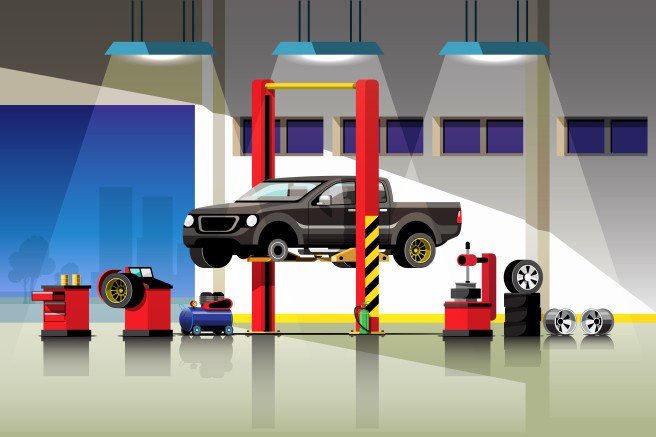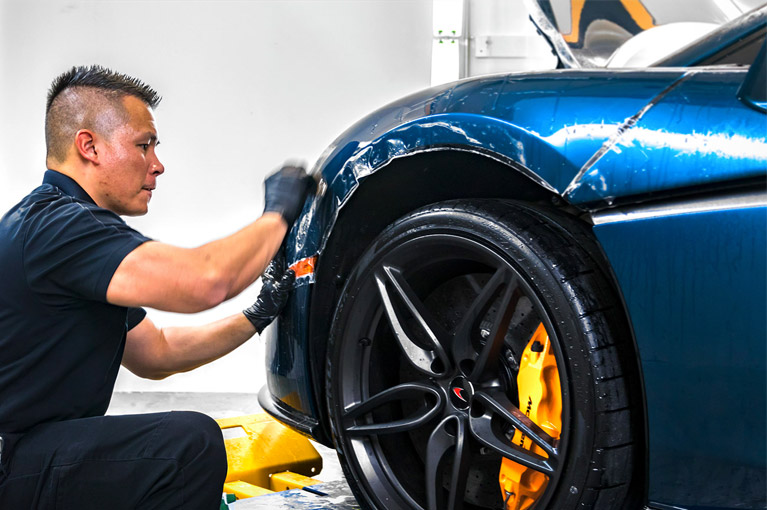
Owning a Mazda is a joy, with its blend of performance, reliability, and sleek design. However, like all vehicles, Mazdas can experience issues over time, including leaks. Whether it’s a coolant leak, oil leak, or any other fluid escaping from its designated system, addressing it promptly is crucial to maintaining your Mazda’s health. If you’re preparing for a Mazda leak repair service, here’s what you can expect.
Identifying the Leak
The first step in any leak repair service is identifying the source and type of the leak. Leaks can come from various parts of your Mazda, such as the engine, transmission, coolant system, or even the brakes. Here’s how the process typically unfolds:
Visual Inspection
When you bring your Mazda to the repair shop, the technician will start with a visual inspection. They’ll look for obvious signs of leakage such as puddles or drips under the car, stained engine components, or residue on hoses and seals. The color and texture of the leaking fluid can provide immediate clues:
Oil: Brown or black, depending on its age.
Coolant: Usually green, yellow, or pink.
Transmission Fluid: Red or brown.
Brake Fluid: Clear to brown, with an oily feel.
Diagnostic Tools
If the visual inspection isn’t conclusive, the technician might use various diagnostic tools. UV dye can be added to the suspected leaking fluid; after running the engine for a while, a UV light will reveal the leak’s location. Pressure tests on cooling systems or brake lines can also help identify elusive leaks.
Estimating the Repair
Once the leak is identified, the next step is to estimate the repair. The technician will explain the issue, suggest necessary repairs, and provide a cost estimate. Factors influencing the cost include the complexity of the repair, the parts needed, and the labor involved.
Transparency and Communication
A reputable repair shop will keep you informed at every step. They’ll explain the severity of the leak, why the repair is necessary, and how it will be performed. This transparency helps build trust and ensures you understand the value of the service being provided.
Preparing for the Repair
Before diving into the repair, the technician will take several preparatory steps. These ensure the repair is conducted efficiently and effectively.
Parts Procurement
If specific parts need to be replaced—such as gaskets, hoses, or seals—the repair shop will either have these in stock or order them from a reliable supplier. Genuine Mazda parts or high-quality aftermarket alternatives will be used to ensure compatibility and longevity.
Safety Precautions
Safety is paramount. The technician will make sure the vehicle is securely lifted on a hoist if necessary and disconnect the battery to prevent any electrical issues during the repair.
The Repair Process
The actual repair process can vary greatly depending on the type and location of the leak. Here’s a look at some common scenarios:
Oil Leak Repair
Oil leaks are among the most common issues. They can originate from various points, such as the oil pan gasket, valve cover gasket, or oil filter. Here’s a typical oil leak repair process:
Drain the Oil: The technician will first drain the existing oil to prevent any spillage during the repair.
Remove Components: Depending on the leak’s location, several engine components might need to be removed to access the leaking part.
Replace Gaskets or Seals: The faulty gasket or seal is replaced with a new one.
Reassemble and Refill: After replacing the necessary parts, the technician will reassemble the engine components, refill the oil, and check for leaks.
Coolant Leak Repair
Coolant leaks can lead to overheating and severe engine damage if not addressed. Common sources include the radiator, hoses, or water pump. Here’s what to expect:
Drain the Coolant: Similar to oil leak repair, the existing coolant is drained.
Inspect and Replace: The technician will inspect hoses, the radiator, and the water pump for damage and replace any faulty parts.
Pressure Test: After repairs, a pressure test ensures there are no more leaks.
Refill and Bleed the System: The cooling system is refilled with fresh coolant, and air pockets are bled out to ensure proper circulation.
Transmission Fluid Leak Repair
Transmission leaks are less common but can be serious. They often stem from the transmission pan gasket or seals. Here’s the repair process:
Lift the Vehicle: The Mazda is lifted to access the transmission.
Drain Transmission Fluid: The old fluid is drained to prevent mess and allow for a clean repair.
Replace Seals or Gaskets: Faulty seals or gaskets are replaced.
Refill and Test: The transmission is refilled with fluid, and the vehicle is tested to ensure proper operation.
Post-Repair Testing and Quality Check
After completing the repair, the technician will perform thorough testing to ensure the issue is resolved. This step includes:
Fluid Level Check
All fluid levels are checked and topped off as needed. This ensures that your Mazda is ready to run smoothly and efficiently.
Leak Test
The vehicle is run for a period to confirm that the repair was successful and no leaks are present. This might include a road test to simulate driving conditions.
Clean-Up
Any residual fluids are cleaned up, and the engine bay is wiped down. This not only ensures a tidy vehicle but also makes it easier to spot any future leaks.
Final Steps and Customer Communication
Before handing your Mazda back, the repair shop will take a few final steps to ensure your satisfaction:
Review of Work Done
The technician or service advisor will walk you through the repairs performed. They’ll explain what was done, why it was necessary, and how it benefits your vehicle.
Maintenance Tips
You’ll receive tips on how to maintain your Mazda to prevent future leaks. This might include regular checks of fluid levels, timely oil changes, and keeping an eye out for warning signs of leaks.
Warranty Information
Most reputable repair shops offer a warranty on their work. Be sure to ask about the warranty details, including what it covers and how long it lasts.
Payment and Documentation
Finally, you’ll settle the bill and receive documentation of the repair. Keep these records as they’re useful for future maintenance and can add value if you decide to sell your vehicle.
Preventing Future Leaks
While some leaks are inevitable, regular maintenance can minimize the risk. Here are some tips to keep your Mazda in top shape:
Regular Inspections
Routine inspections by a professional can catch small issues before they become big problems. Regular visits to your Mazda service center are a good habit.
Proper Fluid Levels
Always ensure your vehicle’s fluids are at the correct levels. Low fluid levels can cause undue stress on components, leading to leaks.
Use Quality Fluids
Using high-quality fluids and adhering to Mazda’s recommendations can prolong the life of your vehicle’s systems and reduce the likelihood of leaks.
Address Issues Promptly
If you notice any signs of a leak, such as fluid spots under your car or dashboard warning lights, address them immediately. Prompt attention can prevent further damage and more costly repairs.
Conclusion
A Mazda leak repair service is a detailed process designed to restore your vehicle’s health and performance. From identifying the leak to performing the repair and conducting post-repair tests, every step is crucial. By understanding what to expect and how to maintain your Mazda, you can ensure it remains a reliable and enjoyable vehicle for years to come. Regular maintenance and prompt repairs are key to keeping your Mazda in peak condition, allowing you to enjoy the thrill of driving with peace of mind.








